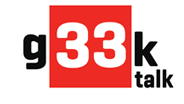Note: This is the transcript from the “Core.async a Clojure Library for Asynchronous Programming” presentation by from The New York Times. The video of his presentation can be found here: https://g33ktalk.com/core-async-a-clojure-library/
David Nolen: My name is David Nolen. I’m going to talk a bit about ClojureScript in core.async. How many people here have ever read about Core’s communicating sequential processes? Cool. That’s good. Has anybody ever tried using Golang, Rob Pike’s Golang? Only one, okay. Has anybody used a language that actually implements CSP? I mean, Go is one. So not that many. So this is something I think is really funny that something that nearly everybody has heard of, but nobody has tried. There’s been languages in the past. You had Occam-pi for the transputer, you had Concurrent ML, which was a variant of Standard ML that supported CSP. Then Go is actually really making waves. People really like it. I don’t really like it, but I think the CSP aspect of it is actually pretty cool. It very much holds very closely to Tony Hoare’s ideas.
So, Rich Hickey decided more or less to just copy Go’s interpretation of Tony Hoare’s original ideas, so I’m not going to assume that you know too much about CSP, and so we’ll go slow, but we’ll end up going fast later, so it won’t be boring if you think you know this stuff.
